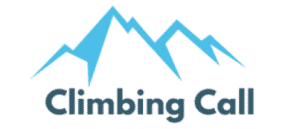Whether you are an avid rock climber or an aspirant novice in the sport, you know that this full-body sport helps you work out many muscles in your body. In fact, if rock climbing is done the right way, it can be one of the best workouts that you can ever think of. From the core to the legs, there is an array of body parts that you exercise via rock climbing.
Once you venture into rock climbing, climbers tend to be consistent, and they see significant developments in their muscles across the body. Since most rock climbing beginners and pros would like to know what muscles rock climbing work, we shall take a closer look at that so that you can understand them better.
Most Active Muscles Groups in Rock Climbing
It is general knowledge that three muscle groups in your body remain the most active while climbing. They include the upper body muscles, middle body muscles or cores, and lower body muscles and these are where body transformation out of rock climbing occurs.
They will be no more than five types of muscles that get you going, and if these certain muscles are developed as they should, rock climbing, bouldering, rappelling, and the likes will truly become a fun activity. Let’s have a brief on the muscles group-wise.
Upper Body Muscles
-
Your Lats
Also known as the latissimus dorsi climbing muscle, this is one of the many muscles that get worked once you venture into rock climbing. Typically, these muscles are large and are wing-shaped. They are located on the backside and usually get engaged during exercises such as the pull-up motion.
In simple terms, you rely on these muscles to pull your body upwards so that you can reach the next handhold. As you scale the climbing wall, it is important to note that this muscle gets hit or engaged from any angle. Due to such activities, this muscle develops and becomes stronger than ever.
-
Your Forearms
Some of the muscles used in climbing a ladder are in your forearm. To climb or scale a rock climbing wall, you need to have a good grip. This is because a weak grip can be a deal-breaker and make you fall every time you try to scale any rock climbing wall. Thankfully, these muscles hardly take time to develop since you will be hanging off the wall or inclined surfaces now and then.
However, your hand hardly has many muscles that can facilitate gripping. As a result, your forearms are engaged to a great extent. To experience this, try to wear a short-sleeved shirt and then move one finger up and down.
As the finger makes certain moves, you will see muscle activity all the way from your finger to your elbow. This kind of movement is always replicated once you try to grip an object using your hand. If you have a strong pair of hands, you will have an easy time maneuvering from one point to another.
-
Your Biceps
Typically, these are the muscles located on the upper part of your arm. In most cases, these muscles are always used whenever you want to bring your hands close to or near your body.
In addition, these muscles get stimulated once you try to thrust your body towards the location of your hands. If you combine these muscles with strong lats, be sure that you will scale the rock climbing wall more efficiently.
Middle Body Muscles
-
The Core
One of the most overlooked body parts is the core. With the abdominal muscles in place, you can trust that you will be able to become stable during the entire rock climbing session. In fact, without them, your body will have difficulty remaining secure on a rocky surface.
For instance, if you are climbing or scaling a steep mountain, hill or surface, your core has to contract so that the pelvis can remain in line with your chest while you are almost hanging upside down.
If you continually engage your core on such surface, you will be able to alleviate the weight on other body muscles such as the biceps, forearms, and the back. As a result, you will be able to climb longer distances and remain fatigue-free. So, if you are a master climber or want to master the tricks of this sport, you must focus on core workouts.
Lower Body Muscles
-
Quadriceps & Calves
If you are just a starter, the chances are that you will engage the lower body muscles during your rock climbing sessions. However, this is no longer the case as you will rely more on these muscles to catapult you up a steep surface. That said, these muscles still get used whenever you want to push your body upwards.
To start with, the quadriceps get used during such sessions. Typically, these muscles play a critical role in straightening the lower leg from a bent position, such as when trying to step from one foothold to the next one. As the name suggests, the quadriceps are made up of the 4 large muscles on the front side of your thigh.
Besides the quadriceps, the calves also get engaged during rock climbing sessions. These muscles usually get used whenever you try to stand on your toes in order to reach the next hold. The two muscles that make up the calf include the gastrocnemius and the soleus.
With these muscles engaged, be sure that your heels will not drop when standing on a thin edge with just the tips of your toes. In addition, these muscles help maintain the position of your foot anytime your foot is on the ledge above your body. To pull your body upwards while keeping your toes on the ledge, the core muscles must get engaged and thus end up getting developed with constant rock climbing.
Does Rock Climbing Build Muscles?
Well, this is very relative. This can be attributed to the fact that the results of this exercise vary from one individual to another. If you are a beginner and start rock climbing, be sure to experience some muscle gain within the first 3 months. However, you must try climbing 2 to 3 times a week. Better still, you must venture into this undertaking at least 1 hour per day.
Although you might gain muscle mass within the first 3 months, this trend will not continue for long. At some point, you will plateau and become lean or toned. As a result, you will not become ‘big’ per se.
There is a need to start with small distances first and then increase the distance overtime during the rock climbing sessions. Also, avoid carrying a lot of weight on your back. Apart from this, consider doing other exercises so that you do not suffer from muscle imbalances.
That said you should never cease to your regular workouts so long you are climbing. An in-depth guide on rock climbing workouts can be a great help if you are determined to continue with regular climbing workouts on your own and at home. Following that type guide will make your endeavor to develop the muscles crucial to climbing easier.
Final Words
As we have learned by now, from your latissimus dorsi climbing muscle to your calves, there are many muscles that rock climbing works on. Therefore, you should brace yourself to engage all these muscles to have a smooth rock climbing experience. More so, ensure that you have a trainer so that he or she can identify your weakness and correct it on the go. Engage in rock climbing today, and you will not only become toned but stronger than ever.
And with the knowledge of what muscles rock-climbing work, you are now aware of which parts of your body get most worked during rock climbing. However these are the major muscles to stay the most active and get worked out while climbing and get, but your entire body is engaged in the activity.

